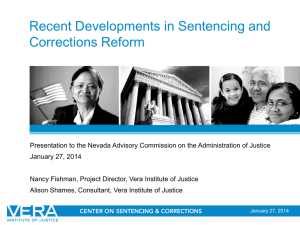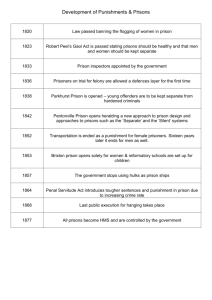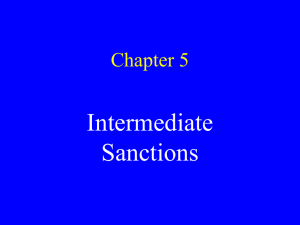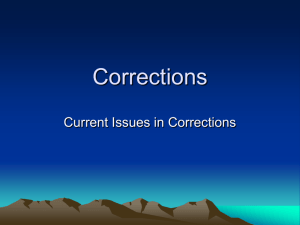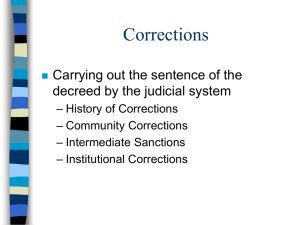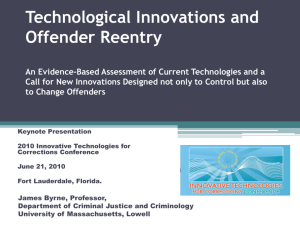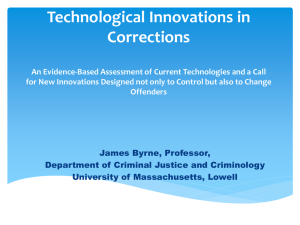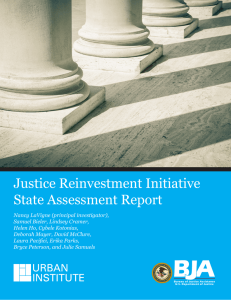The Hard and Soft Technology in Community Corrections PowerPoint
advertisement
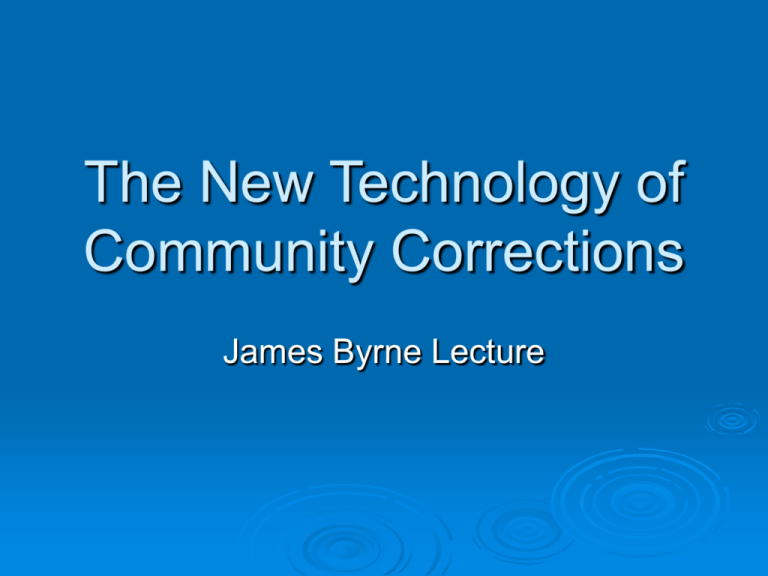
The New Technology of Community Corrections James Byrne Lecture Why community corrections matters 1.Community corrections is a reflection of community values( legitimacy of the law, respect for others, belief in reformation/individual offender change) 2. Community corrections is the most commonly used and effective offender control strategy currently available (e.g. in terms of cost and recidivism reduction). 3. Community corrections helps attain critical correctional goals (e.g. punishment, community protection , rehabilitation, justice) 4. Community corrections is essential for the efficient operation of the criminal justice system at several key decision points: (1) pretrial release and supervision decisions,(2) sentencing/punishment decisions, (3)prison release and reentry decisions, and(4) revocation/return to prison decisions Recent Changes in Community Corrections (1) New Programs —a whole variety of innovative intermediate sanctions has been developed, including reentry partnership initiatives, day reporting centers, day fines, drug courts (2)New technologies---There has been an explosion in the use of information technology to monitor offenders in the community, including, new forms of electronic monitoring, new methods of drug testing, new methods of reporting via kiosks, etc) (3) New personnel from both the public and private sector, many of whom have backgrounds and qualifications more in line with policing than traditional community corrections. Correctional Control As our prison system has grown, we have incarcerated individuals at a higher rate across all major offense categories. However, we do in fact have a greater proportion of violent offenders in our state prison system today (52%) than a decade ago (47%). By comparison, the majority of offenders in federal prison (6 out of 10) are serving time for drug related offenses. On average, offenders sent to prison in the United States received sentences of approximately 4.5 years; they will typically be released in 2.5 years. Offenders receive jail sentences of about 6 months in duration, but jail systems vary in the actual time served. Surveillance and Control In 2005, almost half of all new prison admissions (300,000 of 600,000) were technical violators; they were returned to prison for periods ranging from a few months to several years (in California, technical violators served an additional 9 months in prison. One of the ongoing dilemmas for community corrections is how to enforce multiple, controlbased supervision conditions without relying on prison as the primary sanction for noncompliance. Changes in Release Policies The major shift in parole release mechanisms over the past 25 years has been away from discretionary release and toward supervised mandatory release . In 1980, about 55% of all offenders were released from prison based on a discretionary decision by a state parole board. By 2005, only slightly more than 20 % were released from prison in this manner . During this same period, many state legislatures rewrote their parole release guidelines to create a new release mechanism, supervised mandatory release, which essentially eliminated the need for a discretionary parole board review. Once offenders completed their mandatory minimum period of incarceration, they were released from prison and placed under mandatory community supervision for a specified follow-up period. In 1980, approximately 18% of all prisoners were released in this manner, but by 2005, almost 40% of all inmates re-entered the community on supervised mandatory release. Hard Technology Innovations Electronic Monitoring Drug Testing Technologies for managing alcohol-involved offenders: ignition interlock devices and remote alcohol monitoring Technologies for managing sex offenders: polygraphs,penile plethsysmographs, and computer use monitoring ( Field Search). Automated Reporting Systems and Language Translation Devices Soft Technology Innovations In Community Corrections New Risk Assessment Instruments ( LSI- R) New Case Management Systems New Supervision Strategies( Proactive Community Supervision, utilizing motivational interviewing and positive reenforcers in conjunction with sanctions. New Concentration: Timing, Location, and Risk




